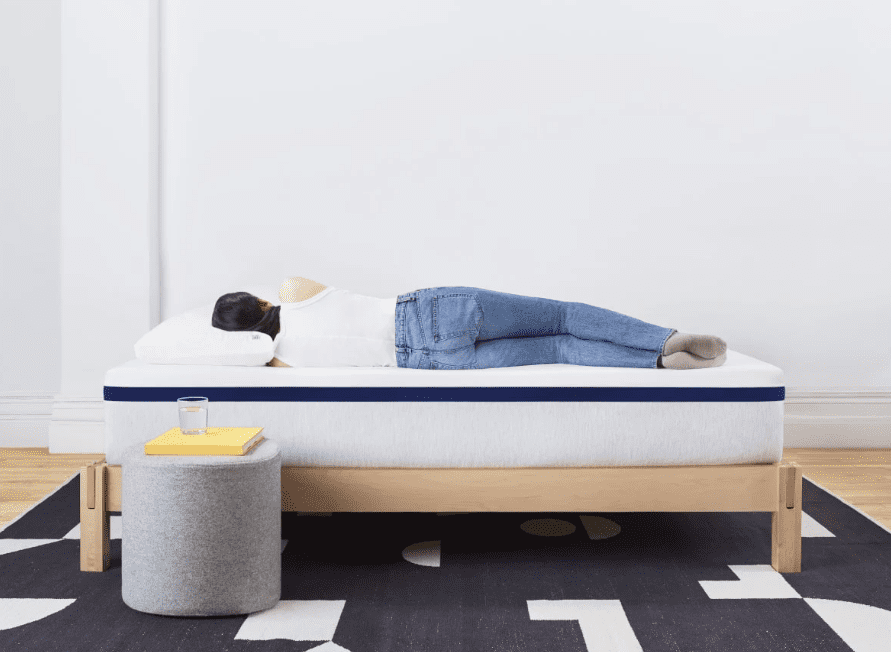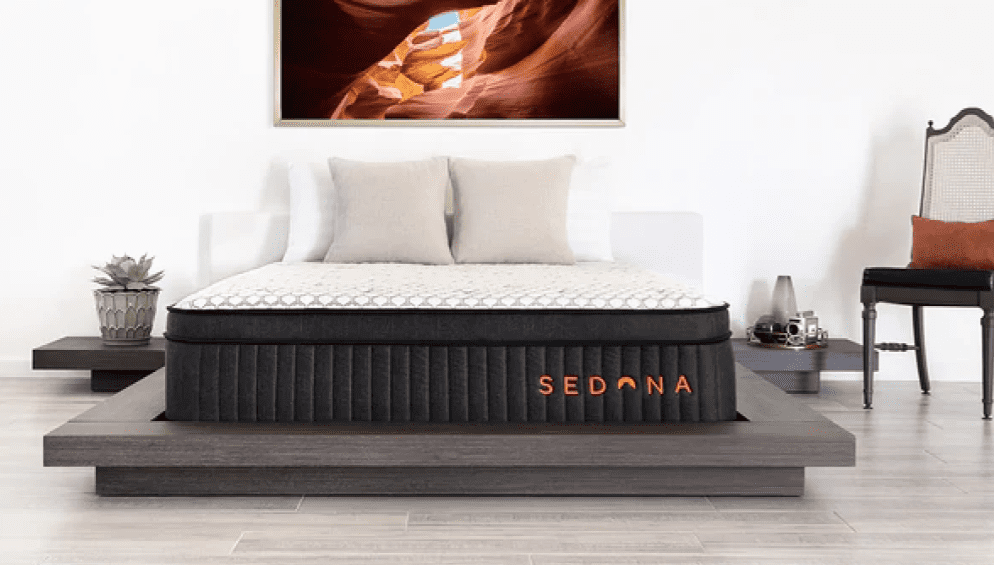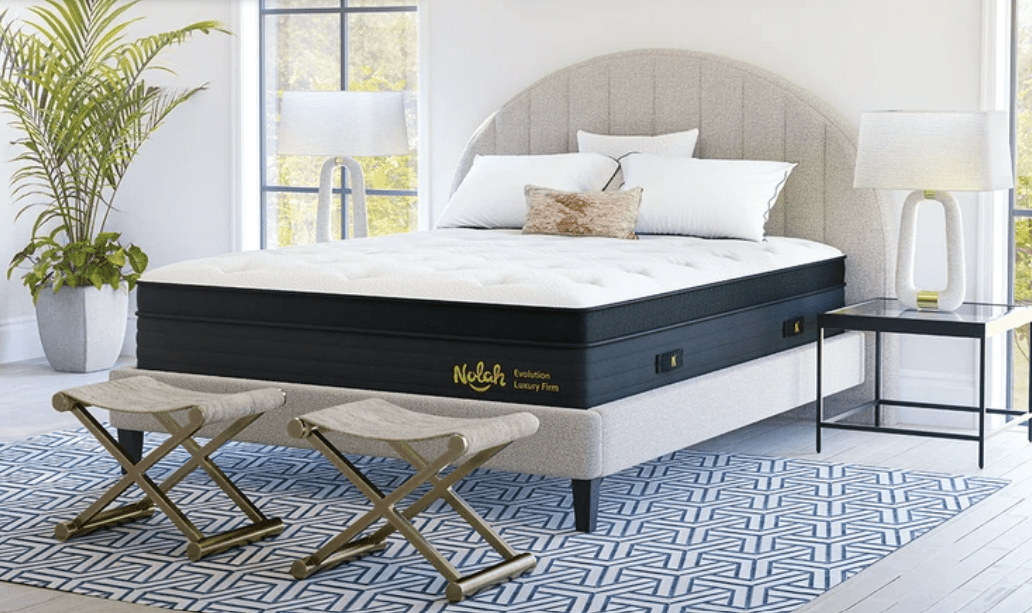
Organic Flannel Sheets: The Best Picks for 2024
Discover the top organic flannel sheets for 2024! Eco-friendly, cozy, and durable options to enhance your bedding. Read reviews and benefits now.
When you buy through our links, we may earn a commission. Products or services may be offered by an affiliated entity. Learn more.

| Rank | Brand Name | Price | Trial (Nights) | Warranty (Years) | Construction | Popularity |
|---|---|---|---|---|---|---|
| 1 | Nectar | $799 | 365 | Lifetime | Memory Foam | High |
| 2 | Tempur-Pedic | $2,999 | 90 | 10 | Memory Foam | High |
| 3 | DreamCloud | $1,095 | 100 | 10 | Hybrid | High |
| 4 | Purple | $1,149 | 100 | 10 | Hybrid | High |
| 5 | Helix | $999 | 100 | 10 | Hybrid | Medium |
| 6 | Leesa | $999 | 100 | 10 | Hybrid | Medium |
| 7 | Brooklyn Bedding | $1,249 | 120 | 10 | Hybrid | Medium |
| 8 | Bear | $895 | 100 | 10 | Memory Foam | Medium |
| 9 | Sealy | $1,299 | <120 | 10 | Hybrid | Medium |
| 10 | Saatva | $1,399 | 180 | 15 | Innerspring | Medium |
A herniated disc, also known as a slipped or ruptured disc, is a condition affecting the spine. The spine is made up of individual vertebrae, with cushion-like intervertebral discs sitting between them. These discs are composed of a tough, outer layer called the annulus fibrosus and a soft, gel-like inner core called the nucleus pulposus.
A herniated disc occurs when the nucleus pulposus pushes through a tear or weakness in the annulus fibrosus. This can result in pressure on the surrounding nerves and spinal cord, causing pain, numbness, or weakness in various parts of the body, depending on the location of the herniation.
Herniated discs are more common in the lumbar (lower back) region of the spine but can also occur in the cervical (neck) and thoracic (upper and middle back) regions. They can be caused by factors such as aging, injury, strain from lifting or twisting, or degenerative disc disease. Treatment options for a herniated disc may include physical therapy, medication, lifestyle changes, or in some cases, surgery.

A bad mattress alone is not likely to cause a herniated disc. However, a mattress that does not provide proper support and alignment for the spine can contribute to poor posture, muscle imbalances, and strain on the spinal structures over time. These factors may increase the risk of developing a herniated disc or exacerbate existing spinal problems.
A good mattress should support the natural curve of your spine, allowing for even distribution of body weight and pressure relief on joints and muscles. A mattress that is too soft or too firm can lead to misalignment of the spine, which can cause or worsen back pain and potentially contribute to herniated disc development.
While a quality mattress is essential for maintaining spinal health, it is important to remember that other factors, such as aging, injury, and degenerative changes, play a more significant role in the development of herniated discs. A combination of healthy habits, including proper lifting techniques, regular exercise, maintaining a healthy weight, and using an appropriate mattress, can help reduce the risk of developing spinal problems.
A new mattress can potentially help alleviate some symptoms associated with a herniated disc, especially if the current mattress does not provide adequate support or is causing poor sleeping posture. A suitable mattress can help maintain proper spinal alignment and evenly distribute body weight, which can minimize pressure on the affected area and promote a more comfortable and restorative sleep.
When selecting a mattress for a herniated disc, consider the following factors:
Firmness: Choose a mattress with a firmness level that provides both comfort and support. A medium-firm mattress is often recommended for people with back pain, as it balances support and contouring to maintain proper spinal alignment.
Support: A mattress with good support can help maintain the spine’s natural curvature and prevent excessive sinking or sagging, which can exacerbate symptoms.
Pressure relief: A mattress with good pressure-relieving properties can help alleviate pressure points, especially for side sleepers, who may experience increased pressure on their shoulders and hips.
Materials: Mattresses made from memory foam or latex can offer contouring and pressure relief, while innerspring or hybrid mattresses may provide more support and responsiveness.
Keep in mind that a new mattress is not a definitive cure for a herniated disc, and it is essential to consult with a healthcare professional for appropriate treatment options. In addition to selecting the right mattress, incorporating physical therapy, medication, and lifestyle modifications may be necessary to effectively manage the symptoms of a herniated disc.

Some gentle exercises and stretches that might be beneficial for individuals with a herniated disc include:
These exercises aim to gently stretch and strengthen the muscles supporting the spine, promoting flexibility and potentially alleviating some discomfort associated with a herniated disc.
The Avocado Green Mattress is a popular choice among people who suffer from back pain or spinal conditions, such as herniated discs. This mattress offers a combination of natural materials and advanced technology, designed to promote spinal alignment and pressure relief.
Some features of the Avocado Green Mattress that may make it a good choice for individuals with a herniated disc include:
Firmness: The Avocado Green Mattress is available in two firmness levels, medium-firm and firm. The medium-firm option provides a balance of comfort and support, which can help maintain proper spinal alignment and reduce pressure on the affected area.
Support: The Avocado Green Mattress features a support core made of innerspring coils, which provides targeted support and promotes spinal alignment. The coils are zoned to provide additional support to the lumbar region, where most herniated discs occur.
Pressure relief: The Avocado Green Mattress features a comfort layer made of natural latex foam, which provides cushioning and pressure relief. The latex foam is responsive, contouring to the body and promoting even weight distribution, which can help alleviate pressure points.
Natural materials: The Avocado Green Mattress is made of natural and organic materials, such as organic wool and cotton, which promote breathability, temperature regulation, and sustainability. These materials can provide a healthier sleeping environment for individuals with spinal conditions.
Durability: The Avocado Green Mattress is designed to be durable and long-lasting, which is important for managing spinal conditions over time. The mattress is backed by a 25-year warranty, which provides added peace of mind.
Overall, the Avocado Green Mattress is a good option for individuals with a herniated disc who are looking for a mattress that provides targeted support, pressure relief, and durability. It is important to note that the suitability of a mattress for an individual may vary based on personal preferences and sleeping habits. Consulting with a healthcare professional, such as a physical therapist or physician, can help provide personalized guidance on selecting the best mattress for your specific condition.
Here are some general tips for sleeping with a herniated disc:
Choose the right mattress: A medium-firm mattress may offer the best balance of support and comfort for someone with a herniated disc. It should be firm enough to support the spine’s natural curvature but soft enough to avoid putting excessive pressure on the affected area.
Use pillows for support: Placing pillows strategically can help alleviate pressure on the herniated disc. For example, if you sleep on your side, place a pillow between your knees. If you sleep on your back, place a pillow under your knees to maintain the natural curve of your spine.
Sleep in a comfortable position: The ideal sleeping position will depend on the location of your herniated disc and your personal comfort. Generally, sleeping on your back or side is recommended. Avoid sleeping on your stomach, as this can exacerbate the condition.
Maintain a consistent sleep schedule: Going to bed and waking up at the same time every day can help improve sleep quality and overall health.
Practice good sleep hygiene: Create a relaxing bedtime routine, keep your bedroom dark and cool, and limit exposure to screens and other stimulating activities before bed.
Manage pain: Over-the-counter pain relievers or prescription medications recommended by your doctor may help alleviate pain and improve sleep quality. Also, consider incorporating relaxation techniques, such as deep breathing exercises, progressive muscle relaxation, or meditation, to manage pain and promote relaxation.
Consult a professional: If your sleep is still being disrupted by pain, talk to your healthcare provider or a physical therapist. They may be able to recommend specific treatments or exercises to alleviate your symptoms and improve your sleep.
Remember, always consult a healthcare professional before making any significant changes to your sleep routine or starting new treatments.
Poor posture: Maintaining poor posture while sitting, standing, or lifting objects can place additional strain on your spine, potentially worsening your herniated disc.
Heavy lifting: Lifting heavy objects, especially with improper technique, can increase the stress on your spine and exacerbate a herniated disc.
Sedentary lifestyle: A lack of regular physical activity may lead to weak muscles that are unable to support your spine properly, which could contribute to the worsening of a herniated disc.
Obesity: Carrying excess body weight puts additional pressure on your spine and can make a herniated disc more painful or difficult to heal.
Smoking: Smoking can reduce blood flow to the discs in your spine, impairing their ability to heal and possibly worsening the condition.
Repetitive strain: Activities that involve repetitive bending, twisting, or lifting can place added stress on your spine and contribute to the worsening of a herniated disc.
Ignoring pain or symptoms: Not seeking appropriate medical care or continuing activities that cause pain can potentially worsen a herniated disc.
Sleeping position: Sleeping in an uncomfortable position or on an unsupportive mattress can potentially aggravate a herniated disc.

The Helix Midnight mattress is a hybrid mattress that combines memory foam and individually wrapped coils. It has a medium-firm feel and is designed to provide a balance of contouring and support. Here are some factors that might make it suitable for someone with a herniated disc:
Medium-firm feel: A medium-firm mattress can provide the right balance of support and pressure relief for people with back pain, including those with a herniated disc. This type of mattress can help maintain proper spinal alignment, reducing strain on the spine and surrounding muscles.
Zoned lumbar support: The Helix Midnight mattress features zoned lumbar support, which means that it is designed to provide more support in the middle section where your hips and lower back rest. This can help keep your spine in a neutral position and reduce pressure on a herniated disc.
Pressure relief: The memory foam layers in the Helix Midnight mattress can help distribute your body weight more evenly and provide pressure relief, especially for side sleepers. This may help alleviate pain caused by a herniated disc.
Motion isolation: The individually wrapped coils in the Helix Midnight mattress can help minimize motion transfer, which may be helpful if you experience pain when changing positions or if you share the bed with a partner.

The Brooklyn Bedding Sedona mattress is a luxury hybrid mattress that combines multiple layers of foam and individually encased coils. It has a medium-firm feel and is designed to offer both pressure relief and support. Here are some factors that might make it suitable for someone with a herniated disc:
Medium-firm feel: A medium-firm mattress can provide the right balance of support and pressure relief for people with back pain, including those with a herniated disc. This type of mattress can help maintain proper spinal alignment, reducing strain on the spine and surrounding muscles.
Contouring foam layers: The Sedona mattress features multiple foam layers, including memory foam and responsive transition foam. These layers can help provide pressure relief and contouring, which may be beneficial for people with a herniated disc, particularly side sleepers who need cushioning for their shoulders and hips.
Zoned support: The Sedona mattress includes a layer of individually encased coils that are zoned to provide targeted support and pressure relief in different areas of the body. This can help maintain proper spinal alignment, potentially reducing pressure on a herniated disc.
Edge support: The reinforced edge support in the Sedona mattress can make it easier to get in and out of bed, which might be helpful for people with back pain or limited mobility.

The Nolah Evolution is a hybrid mattress that combines foam layers and pocketed coils. It has a medium-firm feel and is designed to offer both pressure relief and support. Here are some factors that might make it suitable for someone with a herniated disc:
Medium-firm feel: A medium-firm mattress can provide the right balance of support and pressure relief for people with back pain, including those with a herniated disc. This type of mattress can help maintain proper spinal alignment, reducing strain on the spine and surrounding muscles.
Pressure-relieving foam: The Nolah Evolution features AirFoamICE™, a foam designed to provide pressure relief and contouring while staying cool. This may help alleviate pain and provide cushioning for individuals with a herniated disc, particularly side sleepers who need pressure relief for their shoulders and hips.
Zoned support: The Nolah Evolution includes a layer of tri-zoned support coils that are designed to provide targeted support and pressure relief in different areas of the body. This can help maintain proper spinal alignment and potentially reduce pressure on a herniated disc.
Edge support: The reinforced edge support in the Nolah Evolution mattress can make it easier to get in and out of bed, which might be helpful for people with back pain or limited mobility.

Luuf offers three primary mattress models:
Luuf Plush Multi-Sleeper: This mattress is designed for side sleepers and those who prefer a softer feel. It features a quilted top layer with gel-infused memory foam, which can provide pressure relief and contouring for side sleepers. However, if you suffer from back problems, this might not provide the necessary support for spinal alignment.
Luuf Luxury Firm Multi-Sleeper: This model is a medium-firm mattress designed for a wide range of sleeping positions, including back and stomach sleepers. It has a balanced feel with a mix of contouring and support, which can be suitable for those with back problems. The mattress features a combination of individually wrapped coils, memory foam, and high-density support foam, providing a mix of pressure relief and spinal support.
Luuf Firm Sleeper: This mattress is designed specifically for stomach sleepers and those who need extra support. It is the firmest of the three models and can provide the necessary support to maintain proper spinal alignment for those with back problems. This model also features individually wrapped coils and high-density support foam to ensure durability and stability.
Text us at 858-232-5760 for assistance. We’re happy to help!

Discover the top organic flannel sheets for 2024! Eco-friendly, cozy, and durable options to enhance your bedding. Read reviews and benefits now.

Discover if your teen has insomnia with our teenage insomnia quiz. Learn symptoms, causes, and treatment options for better sleep today!

Discover top sleep education resources to enhance sleep knowledge for all ages. Improve sleep health with expert tips and classroom activities.

Discover the best Rodan and Fields moisturizer for day and night use. Explore top picks, comparisons, and expert insights for flawless skin.

Discover why Rodan and Fields Active Hydration Serum is a game-changer for dry skin. Boost hydration and achieve younger-looking skin today!

Revitalize your eyes with the best Rodan and Fields eye serums. Discover top products and benefits for hydration, anti-aging, and brightening.
© 2024 Sleep Coast, LLC. All Rights Reserved